Impact
Communications
Following a major overhaul of the Centre’s approach to its communication output in 2020, Exciton Science consolidated its position as a leading source for accurate, engaging and impactful renewable energy and innovative technology research in the Australian and global media in 2021.
In the News
Centre members have continued to demonstrate enthusiasm for working with the Exciton Science Media and Communication Officer to translate their work into content forms that can be disseminated to journalists and editors and widely understood by diverse audiences.
In a modification to the 2020 media strategy, deliberately fewer research stories (six) were distributed to ensure the quality of output and subsequent levels of attention among target outlets remained high.
The emphasis on securing favourable coverage also shifted from distributing content solely via press release distribution mechanisms (Eurekalert, Science Media Exchange) to also placing exclusive stories directly with high-profile journalists through direct relationships.
This approach resulted in nearly 200 stories appearing in outlets across more than 20 different countries, helping the Centre to reach key target audiences and make substantive progress towards achieving its long-term media and communication goals.
Australia
Among the highlights of the 2021 coverage output were articles appearing in The Guardian, the Australian Broadcasting Corporation, and the print edition of The Herald Sun, covering research into the potential of the Melbourne CBD’s built environment to meet 74% of its own electricity needs through wider uptake of solar.
In addition to significant domestic coverage, this research appeared in approximately 50 different outlets around the world.


Global
Members of the Centre were interviewed by Xinhua, China’s state news agency, for a story about the world’s thinnest soft X-ray detector.
This research news was covered by 44 different outlets in countries ranging from Finland, Germany and Italy to Mexico, Argentina and Vietnam.
Other Exciton Science news stories appeared as far afield as Canada, India, Poland, Portugal, Brazil and Guatemala.
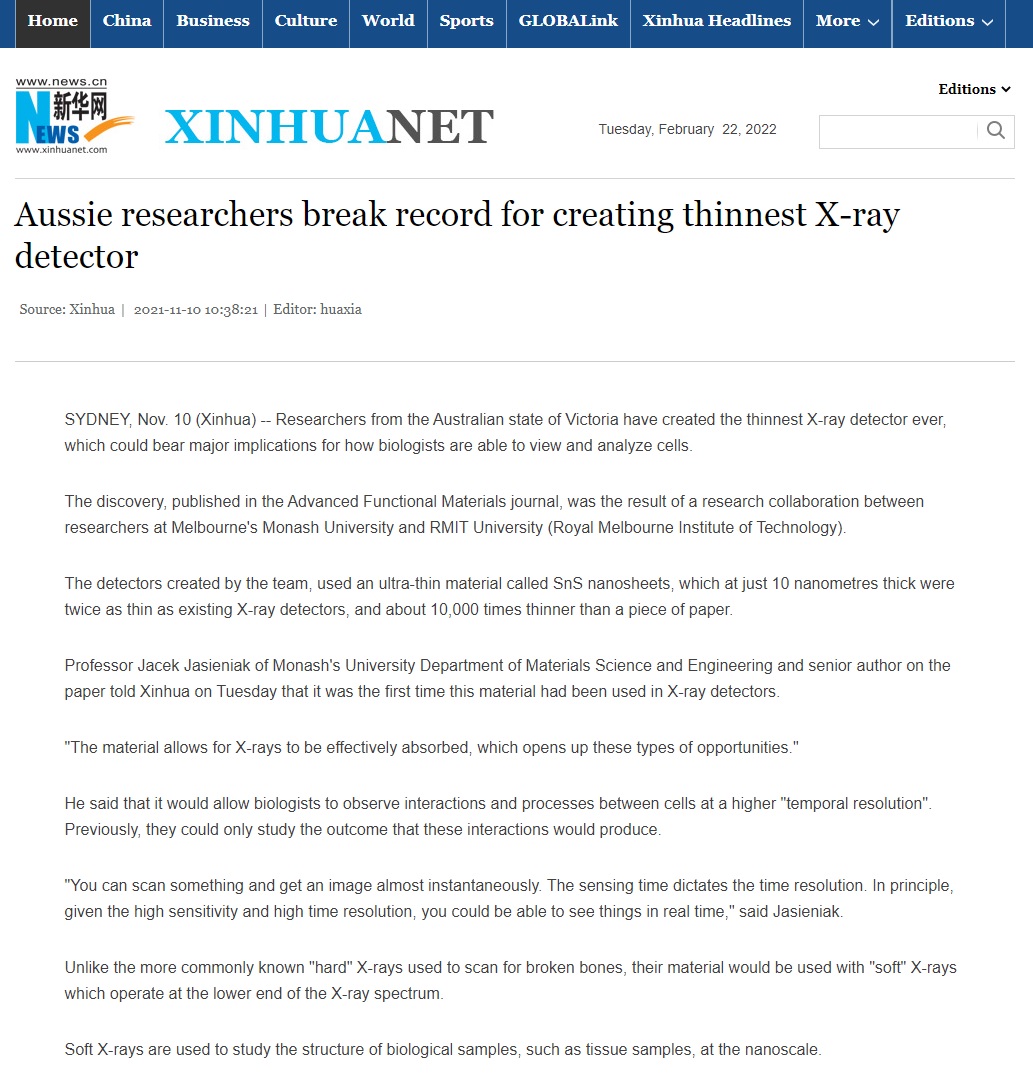
Renewable Energy
Exciton Science research regularly featured in specialist renewable energy outlets, including PV Buzz, Energy Matters, Renewable Energy Magazine and PV Magazine, ensuring our continuing achievements remain prominent among professionals and members of the general public who are engaged with the technical and policy aspects of the transition to net zero carbon.
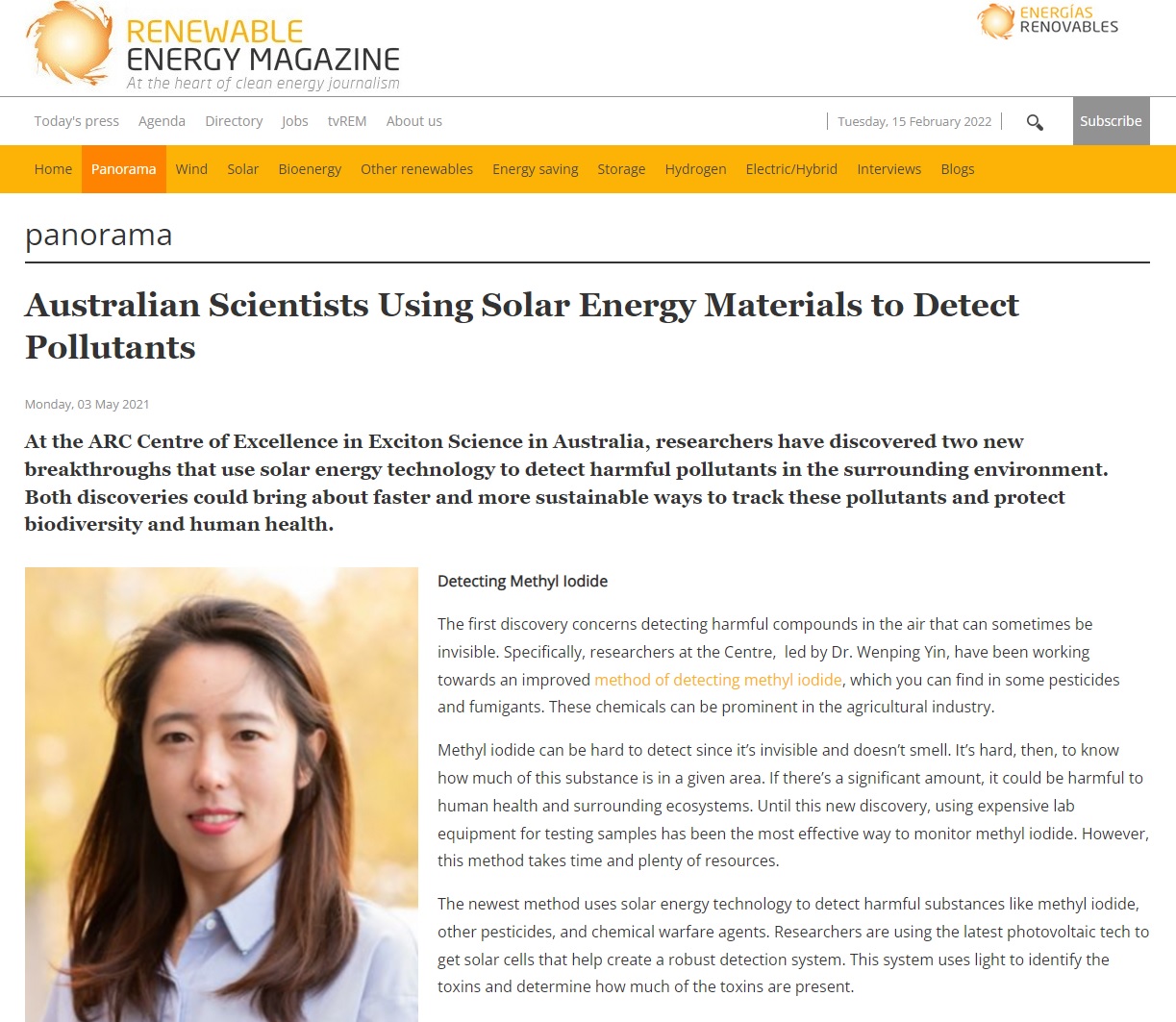
Popular Science
RMIT researcher Carl Belle collaborated with Cosmos Magazine to record a video interview exploring his work on machine learning.
The Centre was also featured regularly in Advanced Science News, Sci Tech Daily, Phys.org, Science Times and Science Magazine.

Human Interest
SBS, Australia’s national foreign-language and culturally diverse broadcaster, featured research fellow Dr Nastaran Meftahi in a Persian radio broadcast.
Nas was also the subject of an RMIT feature article, reproduced from the 2020 Exciton Science annual report.
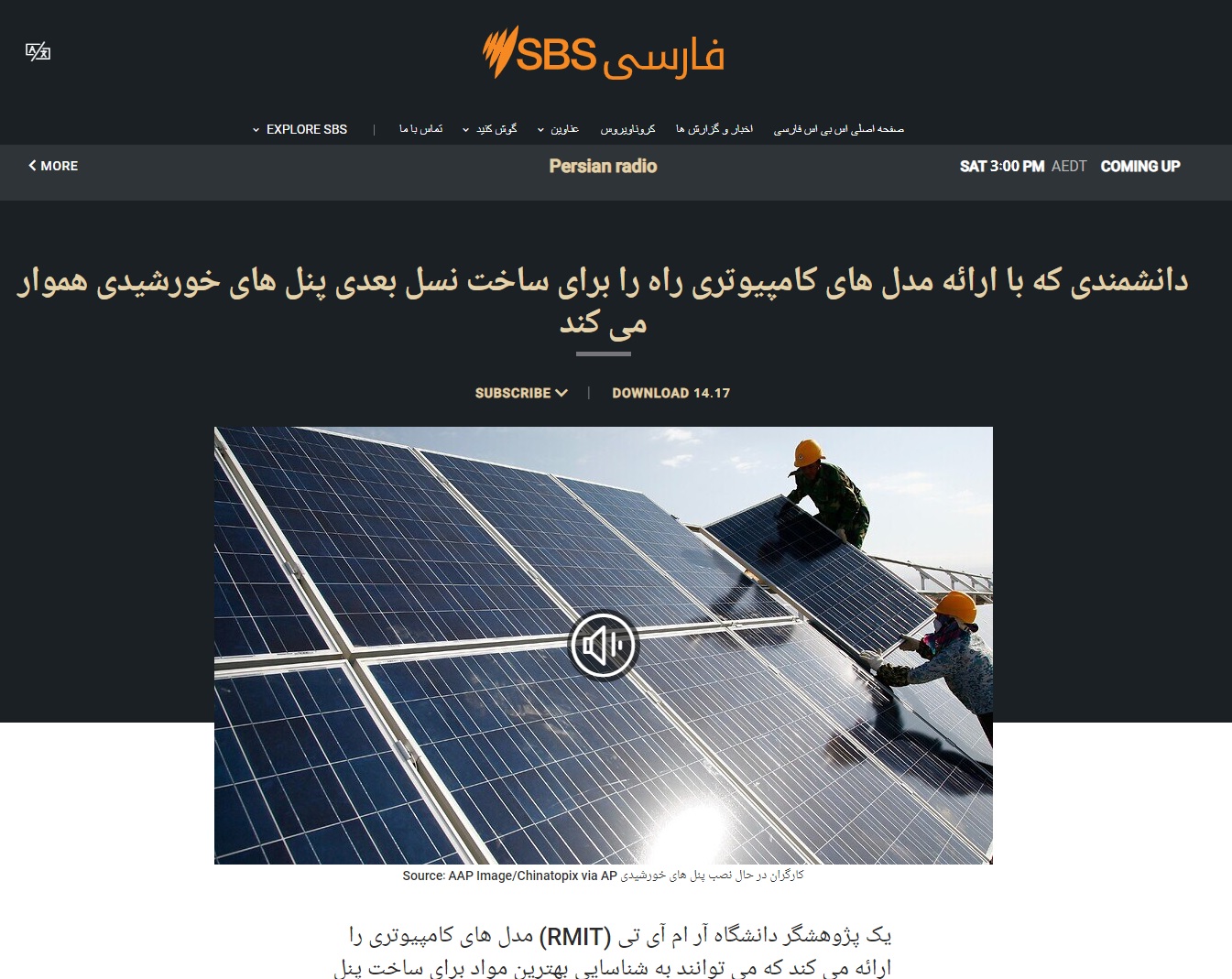
Specialist & Lifestyle
Green Magazine was among the outlets to carry a story about the Exciton Science Light Ideas design competition, an Outreach initiative to engage architecture and design students and recent graduates in the Centre’s new and emerging solar materials.
The Centre was also featured in Renew Economy, Sustainability Matters, Green Review and Environmental News Network.
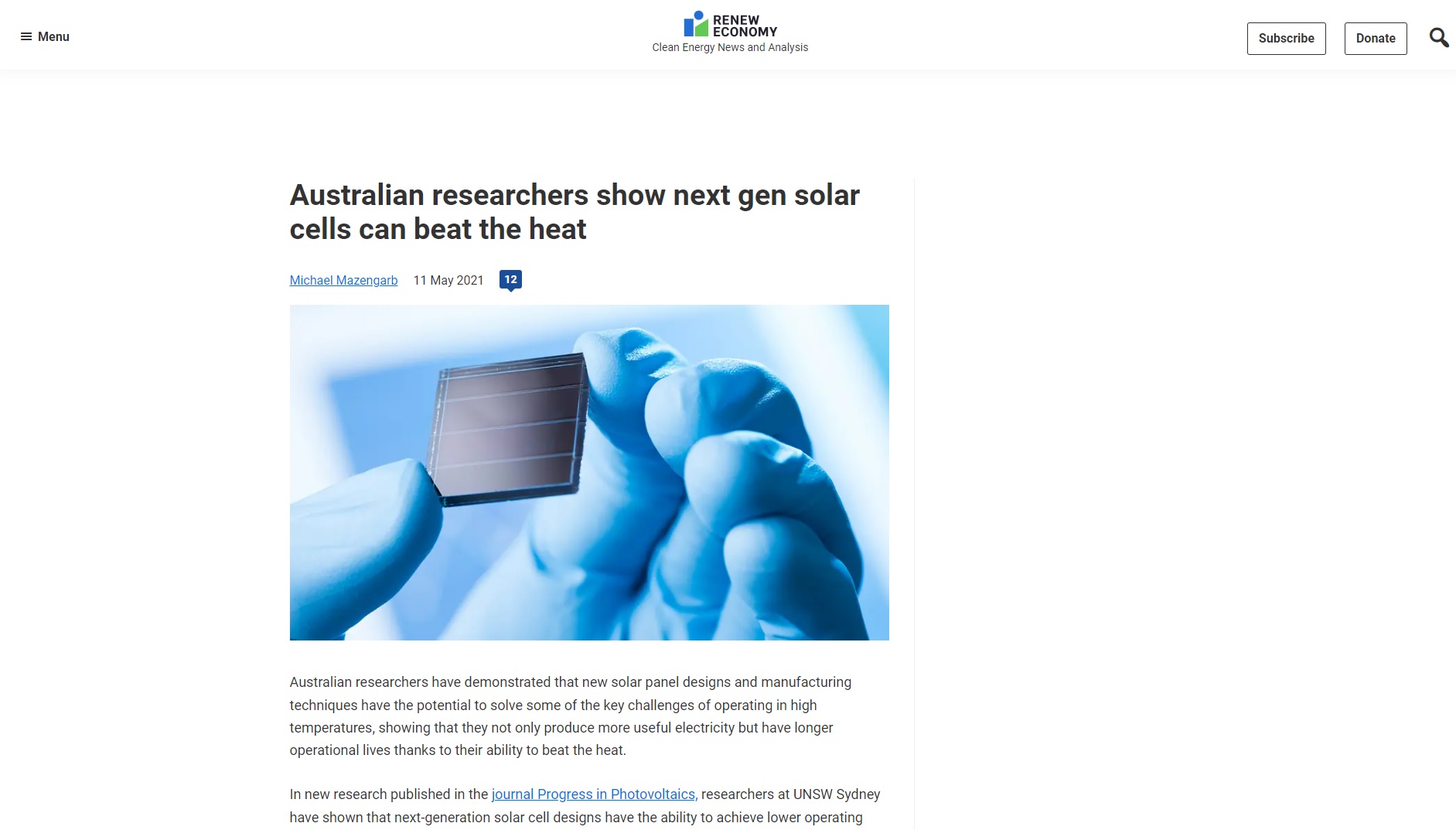
Industry and trade
Printed Electronics World, Electronics Online, AZO Nano, Tech Times, Lab Manager, Tech Explore and Manufacturing Business Technology were among the industry and trade-specific publications to feature the Centre, carrying stories ranging from research into quantum dot optimisation to the use of perovskite nano crystals for chemical detection.
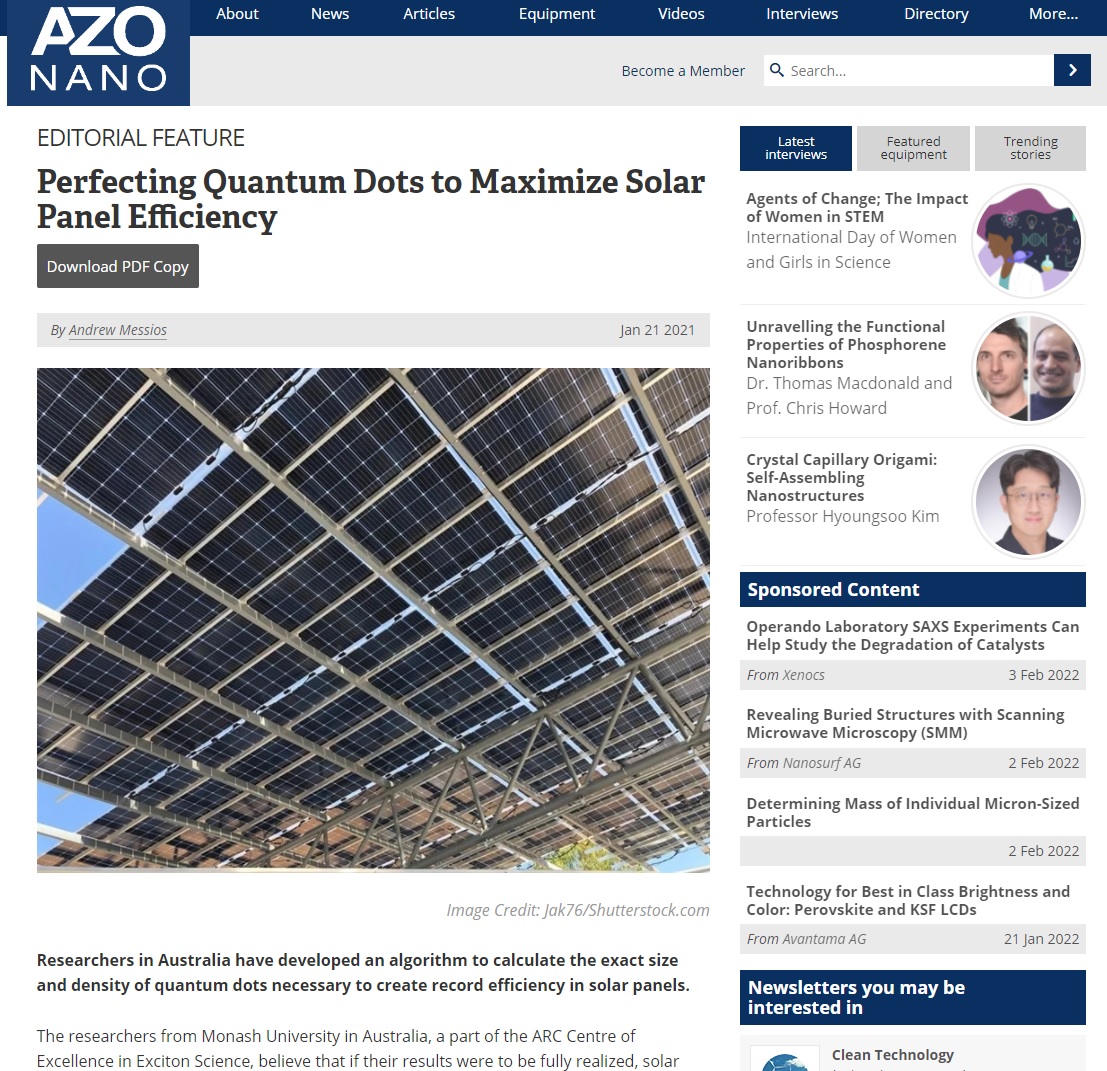
Radio & Podcast
Chief Investigator Girish Lakhwani and his work on perovskite Faraday rotators was the subject of a podcast interview with Faculti, a specialist outlet targeting higher education, research and academia professionals and students around the world.
Melbourne-based community radio station 3CR broadcast an interview with Dr Nick Kirkwood about the Centre’s contribution to synthesising nanoparticle components for COVID-19 testing kits.

Partner organisations and stakeholders
We partnered with the University of Melbourne’s in-house media team to create an article for Pursuit exploring our COVID-19 testing work in detail. Another University of Melbourne-based outlet, The Citizen, featured a BioInspiration project involving Dr Eser Akinoglu.
Exciton Science research news and other developments, including the award of major grants, was featured by the Australian Centre for Advanced Photovoltaics, the Australian Research Council, ANSTO (Australia's Nuclear Science and Technology Organisation), CSIRO and Microscopy Australia.
Science and Technology Australia featured Centre Director Professor Paul Mulvaney in article as part of the annual Science Meets Parliament initiative.
Looking ahead
In 2022 and beyond Exciton Science will continue to combine widely distributed press releases with exclusive or bespoke content tailored for and targeted to individual outlets with a domestic and international profile.
This approach will help the Centre to achieve the widest and most impactful recognition possible for the research excellence being achieved by our members.
By maintaining relative prominence within our field and by deepening relationships with high-profile journalists and media outlets, we will continue to achieve and exceed our agreed strategic communications and media objectives.
Digital and Social Media
Website

The Exciton Science website received visits from 39,706 users in 2021, a 57% increase from 2020.
Pageviews increased by 30%, from 93,874 in 2020 to 122,151 in 2021.
This was accompanied by an increase of average time spent on the website, from 2 minutes 30 seconds in 2020 to 2 minutes 50 seconds in 2021, indicating the quality and relevance of content remains well suited to the Centre’s audience.
The number of visitors reaching the website via social media increased from 5,051 in 2020 to 14,252 in 2021, demonstrating the value of our social media channels in driving traffic to the Centre’s website.
User acquisition is now balanced primarily between organic search (30%), social media (33%) and direct traffic (28%), representing a healthy diversification of traffic sources across different channels.
The most popular sections of the website for 2021 included the internal Members Portal, the Exciton Science Games developed for National Science Week in 2020, research opportunities, details of our Chief Investigators, the Light Ideas design competition, our video tutorials pages and the Solar Cell Challenge.
Social media
The Centre experienced strong growth in follower numbers and engagement levels across its social media channels in 2021.
The Exciton Science Facebook account gained 248 new followers and 211 new likes in 2021, increases of 109% and 99% respectively.
Thanks to a mixed approach of paid-for and organic content posting, annual page reach increased from 878,000 to 4,580,000.
Engaged users climbed substantially from 26,431 to 153,096.
Three-second and one-minute video views also grew, from 135,861 and 4,114 in 2020 to 286,500 and 16,366 respectively in 2021.

Tweet impressions increased by 28% to 406,600, while Twitter profile visits jumped by 392%, from 4,924 to 24,231.
The Centre’s account experienced growth in mentions, new followers and link clicks. Engagement rate (Number of engagements divided by number of impressions) also increased, from 1.38% in 2020 to 1.83% in 2021.


The Exciton Science Instagram account gained 86 new followers in 2021, with a 143% increase in likes (from 807 to 1,969) and a 415% increase in video views (from 370 to 1,906).
Post impressions, post reach, profile visits, profile impressions and profile reach all grew substantially. For example, profile impressions climbed from 428,000 in 2020 to 1,664,568 in 2021, a 288% increase.

The Centre’s LinkedIn account gained 305 new followers in 2021, accompanied by a 284% increase in engagement and a 429% increase in website page clicks from LinkedIn users. Exciton Science LinkedIn posts recorded 126,334 impressions in 2021.

YouTube
In 2021, the Exciton Science YouTube channel recorded 19,643 views, a 1,384% increase on 2020, when the channel was created.
The channel gained 485 new subscribers and achieved 222,175 impressions, with a total watch-time of 1,659 hours and an average view duration of 4 minutes 10 seconds.

Summary
Cumulatively across all social media channels, Exciton Science content generated 7,621,584 impressions in 2021.
Social media continues to be an important mechanism for Exciton Science to reach and engage our target audiences and further the Centre’s strategic Communications and Outreach objectives.
The continued substantial growth in reach and engagements across all platforms has played a key role in significantly increasing website traffic beyond agreed targets.